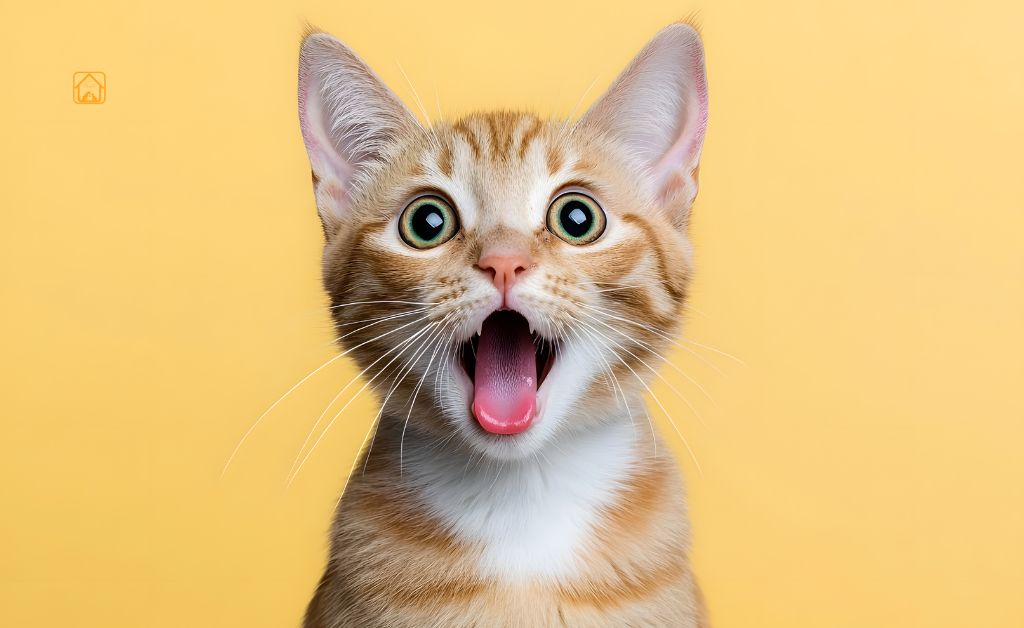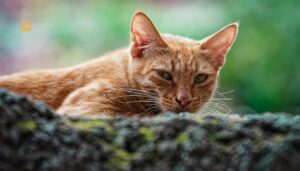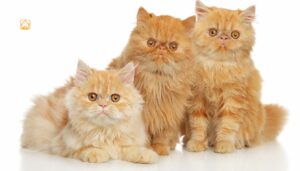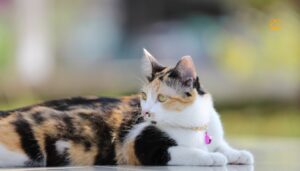The Fascinating World of Cats: Quick Facts Overview
Ever found yourself watching your cat chase shadows or nap in a sunbeam and wondered, “What makes them tick?” Here’s a rapid-fire round of cat facts & myths that every cat lover should know:
- Cats communicate with humans more than with other cats.
- They can rotate their ears 180 degrees, picking up the faintest sounds.
- Each cat’s noseprint is unique, just like a human fingerprint.
- Some ancient cultures worshipped cats, while others feared them.
- Not all cats hate water, some breeds love a splash.
So, whether you’re after cat facts for kids or hunting for random cat facts to impress friends, there’s always more beneath the whiskers.
Top 20 Amazing Cat Facts (With Explanations)
1. Cats have a specialized collarbone
This lets them squeeze through tight spots and slink their way into (and out of) trouble.
2. They’ve got a “Jacobson’s organ”
This extra sensory organ lets cats taste scents, ever seen your cat curl its lip? That’s the Flehmen response in action.
3. A group of cats is called a “clowder”
It sounds made-up, but it’s true. Imagine inviting a clowder to dinner!
4. Cats can jump up to six times their body length
That’s like leaping over a car in one bound.
5. Their purring isn’t just for happiness
Cats also purr when scared, sick, or in pain, possibly to self-soothe or heal.
6. Most cats are lactose intolerant
Contrary to cartoons, milk can give them an upset tummy.
7. Whiskers are sensitive mood detectors
They help cats sense their environment and even signal how they’re feeling.
8. Cats spend 50-70% of their lives sleeping
I sometimes envy their nap schedule, don’t you?
9. Cat tongues are covered in tiny spines
These help them groom and eat, but also make their licks feel like sandpaper.
10. They don’t always land on their feet
Despite the myth, falls from heights can hurt cats. Keep windows secure, especially in tall buildings.
11. Cats can make over 100 different sounds
Dogs, by comparison, have about 10. Talk about variety!
12. Each cat’s meow is unique
They develop different meows to talk to their humans.
13. Their eyes glow at night
Thanks to a layer called the tapetum lucidum, which helps them see in low light (but not total darkness).
14. Ancient Egyptians mummified cats
Cats were considered sacred and often buried with pharaohs.
15. Cats can run up to 30 mph
Try catching one when it’s playtime, good luck!
16. The oldest cat on record lived to 38 years
That’s a lot of nap time. (Verified by Guinness World Records.)
17. Their tails communicate emotions
A straight-up tail means happiness, while a twitching tip can signal irritation.
18. Some cats “chirp” at birds
It’s a quirky, excited sound, sometimes it seems like they’re talking back.
19. Cats have five toes on their front paws, four on the back
But some, called polydactyls, have extra toes (Hemingway cats).
20. They use scent glands to mark territory
When your cat rubs their face on you, they’re claiming you as family.
21. Cats meow mostly for humans
Adult cats rarely meow at each other. That endless chatter? It’s reserved just for us. Meowing is their way of talking directly to humans.
22. Cat purrs may promote healing
A cat’s purr vibrates at a frequency of 25–150 Hz, which is believed to aid bone and tissue regeneration. Science is still exploring this, but many believe it’s a natural form of feline therapy.
23. Cats can rotate their ears 180 degrees
Each ear is powered by 32 separate muscles, allowing cats to pivot their ears like radar dishes to pinpoint sounds with incredible accuracy.
24. Cat noses are as unique as fingerprints
Every cat’s nose print has a distinct pattern no two are exactly alike, just like human fingerprints.
25. Cats sweat through their paws
Cats don’t sweat all over like humans. Instead, they release moisture through their paw pads, especially when they’re nervous like during a vet visit.
26. A cat’s brain is more like a human’s than a dog’s
Structurally and emotionally, a cat’s brain has more in common with a human’s than a dog’s, particularly in areas that control emotions and long-term memory.
27. There are between 40 and 70 recognized cat breeds
Depending on the registry, there are dozens of officially recognized cat breeds each with its own appearance, temperament, and quirks.
28. Most calico and tortoiseshell cats are female
Thanks to genetics, nearly all calico and tortoiseshell cats are female. The color pattern is linked to the X chromosome, and two are required for the tri-color coat.
29. Cats have a third eyelid
Known as the “haw,” this hidden eyelid helps protect a cat’s eyes from dust, injury, and dryness. You might spot it when your cat is drowsy or unwell.
30. Some cats love water
While most cats avoid it, some breeds like the Turkish Van are known for their love of swimming and splashing around.
31. Cats share 95.6% of their DNA with tigers
It’s true, your cuddly house cat is genetically very close to its wild cousins. That fierce attitude and stealthy behavior? Now you know why.
32. Kittens are born with blue eyes
All kittens start life with blue eyes. Their permanent eye color usually starts to emerge between 6 to 12 weeks of age.
33. Maneki-neko: The lucky cat of Japan
In Japanese culture, the “beckoning cat” statue, usually a calico, is believed to bring good fortune and prosperity. You’ll often see them near entrances of shops and restaurants.
Cat Breeds: Unique Facts About Siamese, Maine Coon, Ragdoll, and More
- Siamese Cat Facts: Siamese cats are famous for their deep blue eyes, pointed coloring, and chatty nature. They’re often described as “dog-like” for their loyalty and playfulness.
- Maine Coon Cat Facts: These gentle giants can weigh up to 18 pounds and are known for their tufted ears and bushy tails. Maine Coons are friendly, smart, and love water (yes, really!).
- Ragdoll Cat Facts: Ragdolls go limp when picked up, a trait that inspired their name. They’re affectionate, docile, and love to follow their people from room to room.
- Persian Cat Facts: Persians are prized for their luxurious coats and sweet, quiet personalities. Their flat faces require regular grooming and eye care.
- Sand Cat Facts: Native to deserts, sand cats can survive extreme temperatures and rarely need to drink water, getting moisture from prey.
Cat Anatomy & Behaviors: Surprising Truths
Cats aren’t just mysterious, they’re marvels of biology and behavior. Ever noticed how your cat always fits perfectly into that tiny box? Their flexible spine and floating collarbone help with that. And those wild midnight zoomies? Cats are naturally crepuscular, meaning they’re most active at dawn and dusk.
- Whiskers detect even the slightest air movement.
- Cats knead (“make biscuits”) as a comforting behavior from kittenhood.
- They use their tails for balance and communication.
- Unlike dogs, cats walk with both right feet, then both left, a unique “pacing gait.”
I remember catching my cat staring at a blank wall for ages, turns out, their heightened senses pick up tiny sounds or movements we can’t see. Sometimes uncanny, always fascinating.
Funny and Disturbing Cat Facts You Never Knew
- Funny: Cats can’t taste sweetness. So, that cupcake you dropped? Totally safe from feline theft!
- Funny: Some cats are ambidextrous, but many show a preference for one “paw” over the other. Left-pawed or right-pawed, who knew?
- Disturbing: Cats have been known to “gift” their humans with dead prey. It’s not just gross, it’s a sign of affection (and maybe a hint you need hunting lessons).
- Disturbing: Ancient sailors believed cats could control storms. Sadly, many black cats were thrown overboard as “bad luck.” It’s a dark side of feline history.
- Funny: Cats’ buttholes touch every surface they sit on. (Yeah, think about that next time they’re on the dinner table!)
Honestly? I once woke up to a mouse in my shoe, my cat’s idea of “sharing.” Thanks, but no thanks!
The Origins of Cat Myths and Superstitions Around the World
Why do cat myths persist across cultures and centuries? It’s a mix of awe, fear, and the mysterious way cats move through our lives. In ancient Egypt, cats were seen as protectors with divine powers. In medieval Europe, they were accused of witchcraft, especially black cats.
- Egypt: Cats symbolized protection and were considered sacred. Killing a cat, even accidentally, was a grave crime.
- Europe: Black cats were linked to witches and the supernatural, fueling centuries of superstition.
- Japan: The “maneki-neko” (beckoning cat) brings good luck, while some stories warn of shape-shifting “bakeneko.”
- India: Cat superstitions include beliefs about black cats crossing your path causing bad luck, though others see cats as lucky omens.
Ever notice how a single myth can outlive generations? It’s proof of how deeply cats have worked their way into our stories, and our hearts.
10 Common Cat Myths Debunked (With Science)
- Black cats bring bad luck
Not true! In many cultures, black cats are symbols of good fortune. Sadly, this myth still affects adoption rates. - Cats have nine lives
They’re resilient, but no cat gets a do-over. This saying comes from their ability to escape danger, not actual extra lives. - Cats always land on their feet
Cats have a “righting reflex,” but injuries from falls are common. Keep windows and balconies safe. - Cats hate water
Most dislike getting wet, but some breeds (like Maine Coons) love water. - Cats are solitary and aloof
Many form strong bonds with humans and even other pets. They just show affection in their own ways. - Cats can see in total darkness
Cats see well in low light, not pitch black. - Milk is good for cats
Most adult cats are lactose intolerant. Water is best! - Cats heal themselves by licking wounds
A little licking is okay, but too much can slow healing. When in doubt, ask your vet. - Pregnant women should avoid cats
The risk of toxoplasmosis is low with proper hygiene. Most cases come from undercooked meat, not cats. - Butter on paws helps cats settle in a new home
Nope! It just stresses them out. Stick to slow introductions and comfort.
Sometimes, what sounds like “common sense” is really just old superstition in disguise.
Black Cats: Facts, Superstitions, and Legends
Black cats have always been at the heart of cat facts & myths. Some say they’re spooky, others swear they’re lucky. In the UK and Japan, black cats mean good fortune; in parts of Europe and India, they’re linked to bad luck or witchcraft. Historically, their association with witches led to tragic mistreatment.
- Black cats often wait longer for adoption due to myths and photo bias.
- In Scottish folklore, a black cat arriving at your home brings prosperity.
- Black cats are not a breed, but a color found in many breeds (like Bombay, Maine Coon, Persian).
Honestly, my childhood cat was solid black, and she brought only joy and a bit of harmless mischief to our home.
Cultural Cat Myths: Ancient, Japanese, Indian, and More
- Ancient Myths about Cats: Egyptians believed cats could ward off evil and bring good harvests. Killing a cat was punishable by death.
- Japanese Cat Myths: The beckoning cat (maneki-neko) welcomes luck and prosperity to businesses; some tales warn of supernatural “bakeneko.”
- Cat Superstitions in India: A black cat crossing your path is considered unlucky by some, but lucky in others, depending on the region.
- Calico and Tortoiseshell Cat Myths: Calicos are seen as lucky in many parts of the world, especially for sailors.
- Siamese Cat Myths: In Thailand, Siamese cats were believed to guard temples and bring protection to royalty.
It’s wild how one animal can collect so many stories, some charming, some cautionary, all fascinating.
FAQs: Cat Facts, Myths & Superstitions
What are 5 interesting facts about cats?
Cats can jump up to six times their length, have a unique nose print, use over 100 vocalizations, sleep up to 16 hours a day, and communicate with humans more than with other cats.
What are 20 interesting facts about cats?
Besides the 5 above, cats have a flexible spine, a righting reflex, sensitive whiskers, purr for comfort, can run 30 mph, have sandpaper tongues, can’t taste sweetness, and have been domesticated for over 9,000 years. For more, check our “Top 20 Amazing Cat Facts” section above.
Are black cats really unlucky?
No. In many cultures, black cats bring good luck. The superstition about bad luck comes from medieval Europe and doesn’t hold up today. In fact, black cats often have loving, playful personalities.
Is it true that cats always land on their feet?
Not always. Cats have a righting reflex, which helps them twist mid-air, but falls from high places can still be dangerous. Always keep windows and balconies cat-safe.
Do cats and milk go together?
Most adult cats are lactose intolerant, so milk can cause stomach upset. Fresh water is the safest drink. Kittens should only drink their mother’s milk or kitten formula.
What’s the weirdest cat myth you’ve heard?
One of the oddest is that rubbing butter on your cat’s paws will help them adjust to a new home. In reality, it just makes things messier and can stress your cat more!
Are there any dangerous cat superstitions?
Unfortunately, yes. Myths like black cats bringing misfortune have led to neglect and harm. Always judge a cat by its personality, not old stories.
What makes Siamese, Maine Coon, or Ragdoll cats unique?
Siamese cats are talkative and loyal, Maine Coons are large and love water, and Ragdolls are gentle and go limp when held. Each breed has its own quirks and charms.
Do cats bring good luck?
In many cultures, yes! From the maneki-neko of Japan to the calico cats of sailors, cats have been seen as lucky companions for centuries.
Conclusion
Whether you’re reading cat facts for fun or busting cat myths at your next family dinner, remember, every cat is a little bit of legend, a little bit of mystery, and a whole lot of heart.



